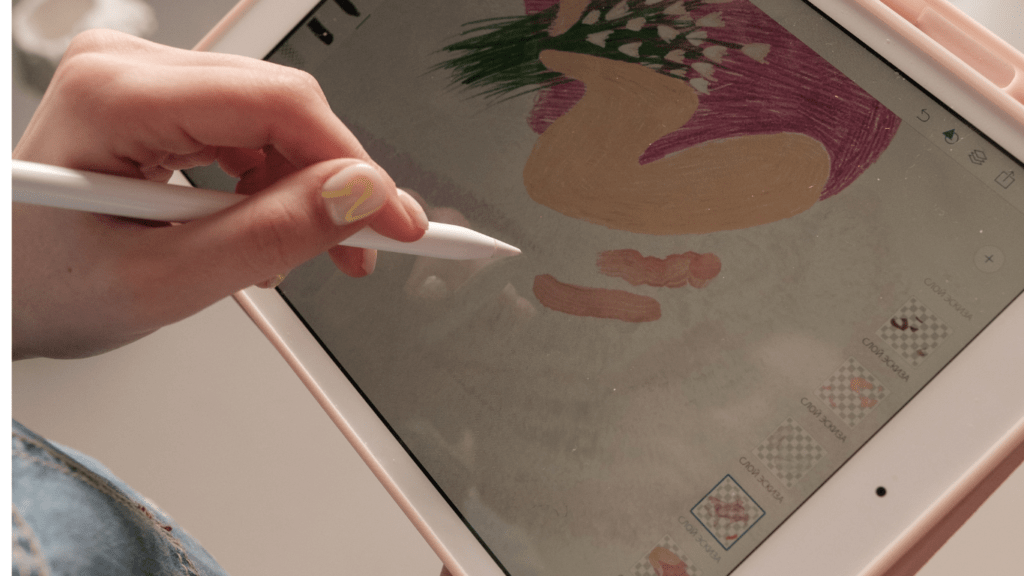Understanding the Online Art Market
Selling art online offers unique opportunities for artists to reach global audiences. Understanding the market is essential for success.
Research Current Art Trends
I stay updated with current art trends by visiting popular art websites, reading industry reports, and following influential artists on social media. Trends often emerge rapidly, so it’s important to monitor platforms like Instagram and art blogs regularly.
Tracking hashtags and observing popular styles can provide insights. For example, I noticed a spike in abstract art and minimalist designs recently. Industry reports from Art Basel and UBS, along with resources like Artsy, provide comprehensive trend analyses.
Identify Your Target Audience
Knowing who appreciates my art helps tailor marketing efforts. I segment my audience by demographics, interests, and purchasing behaviors. Tools like Google Analytics and Facebook Insights offer valuable data.
For instance, younger audiences might prefer digital art, while older collectors might lean towards classic styles. Researching competitors and interacting with followers can reveal audience preferences. Engaging with followers through polls or direct messages on Instagram also provides direct feedback.
Choosing the Right Platform to Sell Art
Selecting the right platform plays a crucial role in selling art online. Evaluating popular platforms and setting up an engaging online gallery can significantly impact an artist’s success.
Pros and Cons of Popular Art Platforms
Different art platforms offer varied advantages and challenges:
- Etsy: Great for beginners due to its large user base and straightforward setup process. However, it takes a 5% commission on sales, and competition can be intense.
- Saatchi Art: Attracts serious art buyers and provides marketing support. Its high commission fees (35%) may deter some artists.
- Artfinder: Features a curated marketplace aimed at collectors. Takes a commission of 33%, which includes transaction fees.
- Big Cartel: Ideal for artists wanting more control over their store’s appearance. It has fewer marketplace features and requires the artist to drive traffic.
Setting Up Your Online Gallery
Creating an appealing online gallery involves several steps:
- High-Quality Images: Use professional photos to showcase artworks. Ensure images are well-lit and accurately represent the colors and details.
- Detailed Descriptions: Write clear, concise descriptions. Mention dimensions, materials, techniques, and any unique aspects of the artwork.
- Pricing Strategy: Research similar artists to set competitive prices. Consider production costs, time spent, and your target audience’s budget.
- Artist Bio: Include a compelling artist bio. Share your artistic journey, inspirations, and achievements.
- Easy Navigation: Ensure your gallery is user-friendly. Categories and filters can help visitors find what they’re looking for quickly.
Using these tips helps create a professional and attractive online gallery that resonates with potential buyers.
Creating High-Quality Digital Representations
High-quality digital representations of artwork are crucial for attracting potential buyers online. Stunning visuals can significantly impact buying decisions.
Photography Tips for Artwork

Proper lighting, high-resolution camera, and correct framing make a professional difference.
- Lighting: Use natural light or soft artificial light to avoid harsh shadows and reflections. Place the artwork near a window or use diffusers with studio lights.
- Camera: Opt for a high-resolution camera to capture intricate details. Smartphones with high-quality cameras can work, but DSLRs are preferable.
- Framing: Center the artwork in the frame, ensuring edges are parallel with the camera frame. Use a tripod to maintain stability and angle.
- Background: A plain, uncluttered background ensures focus on the artwork. Neutral colors work best.
Using Software to Enhance Images
Post-processing can refine images, correcting imperfections and enhancing colors.
- Software Choices: Use Adobe Photoshop or Lightroom for advanced editing features. Free alternatives like GIMP or Canva are also effective.
- Adjustments: Correct brightness, contrast, and saturation carefully to reflect the true essence of the artwork without over-editing.
- Cropping: Remove any unnecessary background space to keep the focus on the artwork. Maintain the aspect ratio for consistency.
- File Format: Save images in high-resolution formats like JPEG or PNG for clarity and compatibility on various platforms.
High-quality digital representations can make a significant difference in online art sales, offering potential buyers a true sense of the piece’s beauty and detail.
Pricing Your Artwork Effectively
Setting the right prices for artwork is vital to success in the online art market. Prices should reflect value, appeal to buyers, and cover costs.
Factors Influencing Art Prices
Several factors impact how you price artwork:
- Materials: High-quality materials, like oils or archival paper, generally cost more and justify higher prices.
- Time and Effort: Complex, time-consuming pieces should be priced higher to compensate for labor.
- Experience and Skill Level: More experienced artists or those with a strong reputation can charge more.
- Market Demand: Popular art styles or subjects can fetch higher prices if demand is high.
- Size and Complexity: Larger or intricate artworks typically require higher prices due to more resources used.
- Artist Expenses: Ensure prices cover costs like shipping, platform fees, and marketing.
Strategies for Pricing Your Pieces
Consider these strategies to set effective prices:
- Cost-plus Pricing: Calculate all costs, including materials and labor, then add a markup for profit.
- Competitive Pricing: Research similar art in your niche and price your pieces competitively to attract buyers.
- Per Square Inch Pricing: Use a consistent rate per square inch of the artwork for transparent and straightforward pricing.
- Tiered Pricing: Offer artworks in different price ranges to cater to diverse buyer budgets.
- Limited Editions: Create limited edition prints to increase exclusivity and justify higher prices.
- Discount Offers: Use discounts or promotions strategically to stimulate sales, but avoid frequent reductions which can devalue your work.
Marketing Strategies for Artists
Effective marketing is essential for selling art online. These strategies can help artists reach a wider audience and boost art sales.
Utilizing Social Media
Social media platforms are powerful tools for promoting art. Artists should use Instagram, Facebook, and Pinterest to showcase their work. Regular posts featuring high-quality images of artwork and behind-the-scenes content engage followers.
Hashtags relevant to the art niche expand reach. Artists can join art-related groups on Facebook to connect with potential buyers and fellow artists. Collaborating with influencers who have a strong following in the art community can also drive traffic to an artist’s online gallery.
Email Marketing and Newsletters
Email marketing keeps potential buyers updated. Artists should build an email list by offering a subscription on their website. Regular newsletters with updates about new artwork, upcoming exhibitions, and special offers maintain engagement.
Personalized emails increase the chances of converting subscribers into buyers. Including exclusive content or discounts in newsletters can incentivize purchases. Using email marketing platforms like Mailchimp or Constant Contact makes managing email campaigns efficient.
Engaging with Your Audience
Engaging with your audience proves essential for selling art online. This connection drives sales and fosters a community around your work.
Customer Interaction and Feedback
Encouraging customer interaction helps create rapport and trust. Promptly respond to comments and messages on your social media platforms (e.g., Instagram, Facebook).
Ask questions and seek opinions to show that you value their input. Consider live-stream sessions where you can showcase new pieces or demonstrate your creative process. Collect feedback through surveys or direct messages and use this feedback to improve your offerings and customer experience.
Building a Loyal Customer Base
Building a loyal customer base requires consistent and meaningful engagement. Share your artistic journey, behind-the-scenes content, and personal anecdotes to create a deeper connection.
Offer exclusive content or early access to new collections to your most engaged followers. Reward loyal customers with discounts, special promotions, or personalized thank-you notes. Cultivating a sense of exclusivity can make your customers feel valued and appreciated, thus encouraging repeat purchases.


 Parisilyn Cruz has played a pivotal role as an article writer and key contributor in the development of Innov Art Foundry. Her deep passion for the art world is reflected in the insightful and engaging content she creates, covering everything from the latest art trends to in-depth explorations of virtual reality's impact on artistic expression. Parisilyn's writing not only informs but also inspires readers, making complex topics accessible and intriguing for a broad audience.
Beyond her writing, Parisilyn has been instrumental in shaping the direction of Innov Art Foundry. Her contributions have helped to establish the platform as a trusted resource for both seasoned artists and newcomers to the art scene. By blending her creativity with a keen understanding of the art landscape, Parisilyn Cruz has ensured that Innov Art Foundry remains at the forefront of contemporary art discourse, continually providing valuable insights and fostering a vibrant community of art enthusiasts.
Parisilyn Cruz has played a pivotal role as an article writer and key contributor in the development of Innov Art Foundry. Her deep passion for the art world is reflected in the insightful and engaging content she creates, covering everything from the latest art trends to in-depth explorations of virtual reality's impact on artistic expression. Parisilyn's writing not only informs but also inspires readers, making complex topics accessible and intriguing for a broad audience.
Beyond her writing, Parisilyn has been instrumental in shaping the direction of Innov Art Foundry. Her contributions have helped to establish the platform as a trusted resource for both seasoned artists and newcomers to the art scene. By blending her creativity with a keen understanding of the art landscape, Parisilyn Cruz has ensured that Innov Art Foundry remains at the forefront of contemporary art discourse, continually providing valuable insights and fostering a vibrant community of art enthusiasts.